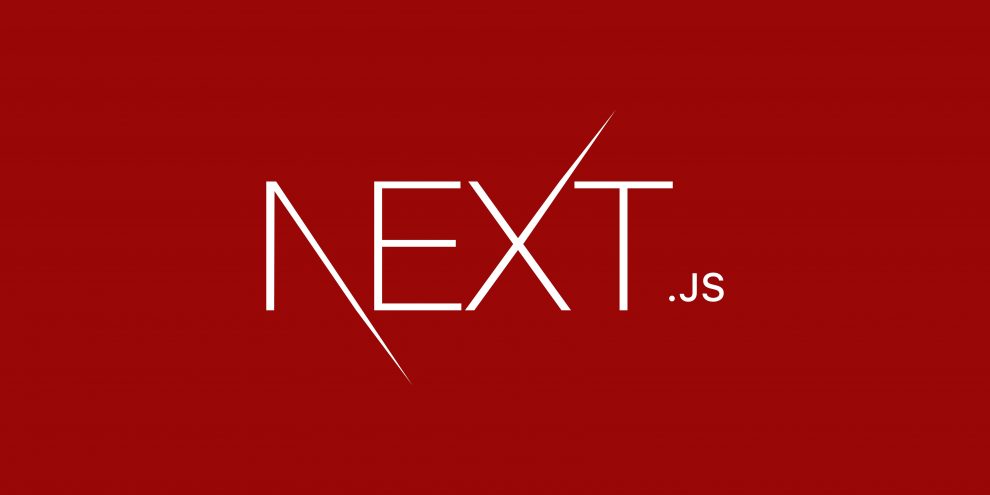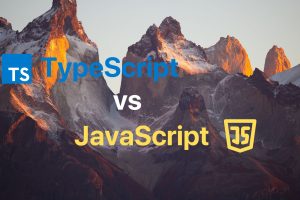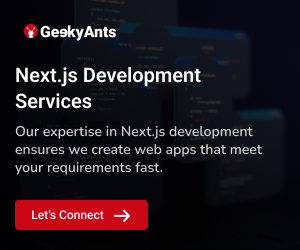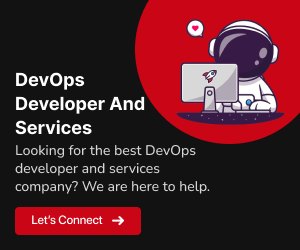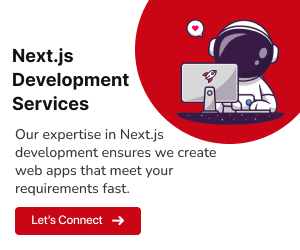In the ever-evolving technological landscape of the United States, the field of web development stands as a thriving domain brimming with opportunities. As you set your sights on securing a Next.js app developer position in the USA, you are embarking on a journey filled with promise and potential. Next.js, a highly sought-after framework for crafting modern web applications, remains in exceptionally high demand. This blog is your compass, guiding you with a treasure trove of invaluable tips to distinguish yourself and successfully land that coveted Next.js app developer role in the United States.
At the heart of this journey lies your mastery of the fundamentals. Before you can truly excel as a Next.js developer, it is imperative to build a robust foundation. Dive deeply into React, the very framework upon which Next.js is constructed. With precision, acquire an in-depth understanding of server-side rendering, routing, and data fetching—these are the bedrock concepts upon which Next.js thrives. This profound comprehension will set you apart and provide you with the unwavering confidence needed to embark on your promising career path.
Understanding Next.js: A Powerful Framework for Modern Web Development
Next.js is an open-source JavaScript framework that simplifies and accelerates the development of modern web applications. It’s designed to enhance the developer experience by providing a set of powerful tools and features for building web applications with React, while also optimizing performance, SEO, and scalability.
Here are some key aspects and features of Next.js:
React Framework:
Next.js is built on top of React, a popular JavaScript library for building user interfaces. It extends React’s capabilities by adding server-side rendering (SSR), static site generation (SSG), and routing features, making it suitable for building both single-page applications (SPAs) and traditional server-rendered web applications.
Server-Side Rendering (SSR):
One of Next.js’s standout features is its ability to perform server-side rendering. SSR allows the server to render the initial HTML page for a request, which improves page load times, SEO, and user experience. Dynamic data can be fetched on the server and injected into the page before it’s sent to the client.
Static Site Generation (SSG):
Next.js also supports static site generation, where pages are generated at build time rather than on each request. This approach results in incredibly fast-loading pages, as they are pre-rendered and cached, reducing the need for server processing.
Automatic Code Splitting:
Next.js automatically splits JavaScript code into smaller bundles that are loaded as needed. This feature optimizes page loading times by reducing the initial download size for visitors.
Routing:
Next.js simplifies client-side routing with an intuitive file-based routing system. Developers can create pages by adding components to the “pages” directory, and the framework handles the routing automatically. This promotes code organization and keeps the application structure clean.
API Routes:
Next.js provides an easy way to create API routes, allowing developers to build serverless functions and back-end services within their application. This is useful for handling data fetching, authentication, and other server-side tasks.
Hot Module Replacement (HMR):
Developers can take advantage of HMR to see instant code changes during development without needing to refresh the entire page. This feature speeds up the development process and enhances the developer experience.
CSS Support:
Next.js offers flexibility in handling CSS, supporting various approaches such as CSS modules, styled-components, and global CSS. It also provides automatic code splitting for CSS to improve performance.
Deployment Options:
Next.js applications can be easily deployed to various hosting platforms, including Vercel (formerly ZEIT Now), Netlify, and traditional web servers. The framework offers features like serverless deployment, continuous integration, and automatic scaling.
Community and Ecosystem:
Next.js benefits from a thriving community and an expanding ecosystem of plugins, libraries, and resources. This ecosystem continues to grow, providing developers with access to a wealth of tools and solutions.
The Path to Becoming a Next.js App Developer
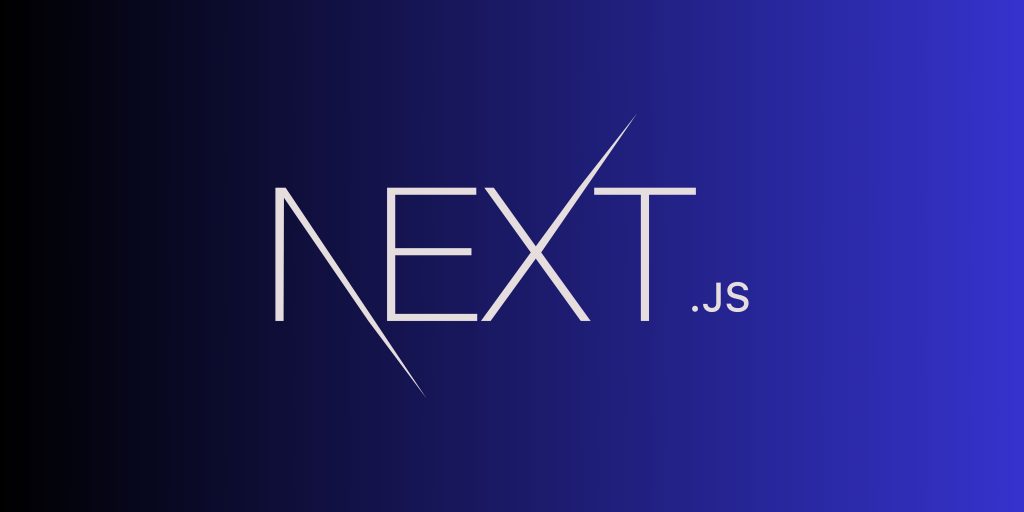
In the ever-evolving technology landscape of the United States, web development remains a thriving field teeming with opportunities. Aspiring to secure a Next.js app developer position in the USA? You’ve set your sights on a promising career path. Next.js, a sought-after framework for building modern web applications, is in high demand. This blog will equip you with invaluable tips for making your mark and landing that coveted Next.js app developer job in the United States.
Resources:
- Next.js Official Documentation – Your go-to source for comprehensive documentation and guides.
- Next.js GitHub Repository – Stay updated with the latest releases and contribute to the project.
- Next.js Blog – Stay informed about the latest developments and best practices in the Next.js ecosystem.
Mastering the Fundamentals
Before you can excel as a Next.js developer, you must first establish a strong foundation. Dive deep into React, as Next.js builds upon it. Gain expertise in server-side rendering, routing, and data fetching—these are the cornerstone concepts of Next.js. A profound understanding of these fundamentals will set you apart and bolster your confidence as you embark on your career journey.
Resources:
- React Official Documentation – Essential for mastering the foundation upon which Next.js is built.
- Next.js Learning – Interactive tutorials to help you grasp the basics and beyond.
- Next.js Crash Course on YouTube – A video tutorial to kickstart your learning journey.
- GeekyAnts Blog – A valuable resource for in-depth technical articles on Next.js and web development.
Building an Impressive Portfolio
A robust portfolio is your showcase of expertise. Compile a comprehensive collection of Next.js projects, encompassing personal endeavors, freelance work, or contributions to open-source initiatives. A well-documented portfolio not only demonstrates your real-world application-building skills but also showcases your ability to tackle complex problems head-on.
Resources:
- Next.js Example Projects – Find inspiration and examples to kickstart your portfolio.
- GitHub – Host your code and projects to share with potential employers.
Staying Informed and Updated
In the fast-paced tech industry, staying informed is paramount. Keep a watchful eye on Next.js documentation, blogs, and official social media channels. Engage actively in developer communities like Stack Overflow, GitHub, and Reddit to remain current on the latest trends, updates, and best practices.
Resources:
- Next.js Newsletter – Subscribe to stay updated with the latest Next.js news.
- Next.js Twitter – Follow for real-time updates and announcements.
Collaborate and Contribute
Collaboration is a prized skill in the world of software development. Contribute to open-source Next.js projects or engage in joint ventures with fellow developers. Not only will this enhance your skills, but it will also expand your network within the developer community, potentially leading to valuable job referrals.
Resources:
- Next.js GitHub Repository – Explore and contribute to the Next.js source code.
Networking Essentials
Building meaningful connections within the tech realm is essential for discovering job opportunities. Attend tech meetups, conferences, and webinars. Become an active participant in LinkedIn groups and online forums dedicated to web development. Networking can open doors and provide you with insights into job openings you might not have otherwise come across.
Resources:
- Meetup – Find tech meetups in your area.
- LinkedIn – Connect with professionals in your field and join relevant groups.
Certifications to Validate Skills

Consider pursuing relevant certifications to substantiate your capabilities. While not mandatory, certifications can elevate your resume’s appeal. Platforms such as Coursera, Udemy, and edX offer courses and certification programs tailored to Next.js and web development.
Resources:
- Coursera – Explore courses related to web development and Next.js.
- Udemy – Find courses and certifications on web development skills.
Thorough Interview Preparation
As you secure interviews, diligent preparation is your key to success. Familiarize yourself with common interview questions for Next.js app developers, tackle coding challenges with finesse, and be ready to elaborate on your projects. Demonstrate enthusiasm for both the company and the role you’re pursuing.
Resources:
- LeetCode – Practice coding challenges to sharpen your problem-solving skills.
- GeekyAnts Careers – Explore career opportunities with GeekyAnts.
Soft Skills Matter
Don’t underestimate the significance of soft skills such as communication, teamwork, and problem-solving. Highlight your ability to collaborate effectively within a team and your capacity to adapt to various work environments during interviews.
Crafting a Stellar Resume
A tailored resume is your ticket to making a memorable impression. Highlight your pertinent skills, experience, and accomplishments. Customize it for the specific job you’re seeking, including your portfolio link, certifications, and any notable contributions to open-source projects.
Persistence and Perseverance
Landing your dream job may require time and effort. Rejections should not deter you; rather, view them as opportunities for growth and self-improvement. Stay resolute in your pursuit, continue applying, and trust that the right opportunity will eventually come your way.
Job Portals in the USA

Searching for job opportunities in the USA, including Next.js app developer positions, can be made significantly more efficient by leveraging job portals. These platforms aggregate job listings from various companies and industries, making it easier for you to discover relevant openings. Here are some top job portals to consider when embarking on your job search journey:
LinkedIn:
LinkedIn is not only a professional networking platform but also a robust job portal. You can create a detailed profile, connect with professionals in your field, follow companies of interest, and apply for jobs directly on the platform.Indeed:
Indeed is one of the largest job search engines globally, with millions of job listings. It allows you to search for jobs by location, salary, job title, and company. You can also upload your resume and apply to jobs with ease.Glassdoor:
Glassdoor not only provides job listings but also offers company reviews, salary information, and interview insights. It’s a valuable resource for researching companies and finding job openings.Monster:
Monster is a well-established job portal that covers a wide range of industries. It offers tools to help you create a resume, receive job alerts, and apply to jobs.Dice:
Dice specializes in technology and IT jobs, making it an excellent choice for tech professionals, including Next.js app developers. You can find a wide range of tech-related positions here.Stack Overflow Jobs:
Stack Overflow, a popular platform for developers, has its job portal, which features tech job listings, including roles for Next.js developers. You can filter jobs by technology stack and location.GitHub Jobs:
GitHub’s job board is another great resource for tech-oriented positions. If you’re passionate about open source and have a GitHub profile, this platform can help you find roles aligned with your interests.CareerBuilder:
CareerBuilder offers a broad range of job listings across various industries. It provides features such as resume building and job matching.SimplyHired:
SimplyHired aggregates job listings from multiple sources, making it a convenient option for job seekers. You can search for jobs by location, job type, and salary range.USAJobs:
If you’re interested in government positions in the United States, USAJobs is the official job portal for federal jobs. It’s a comprehensive resource for government job seekers.
When using these job portals, be sure to create a well-optimized profile or resume, tailor your job searches to your preferences, and apply to relevant positions promptly. Consistent and focused use of these platforms can significantly enhance your chances of landing the Next.js app developer job you desire in the USA.
Conclusion
In your pursuit of becoming a Next.js app developer in the USA, dedication, ongoing learning, and strategic planning are your greatest allies. By cementing your grasp of Next.js fundamentals, cultivating an impressive portfolio, actively participating in professional networks, and keeping abreast of the latest trends, you position yourself as a prized asset in a fiercely competitive job market. Remember, persistence is your steadfast companion throughout this journey. Keep pushing forward, keep applying, and trust that the perfect opportunity will eventually unfold before you. With these valuable insights in your arsenal, you are well on your way to realizing your dream of becoming a Next.js developer in the USA. Best of luck on this exciting adventure!
Also Read: A Deep Dive into the Skills of a Successful next.js App Developer in the USA












